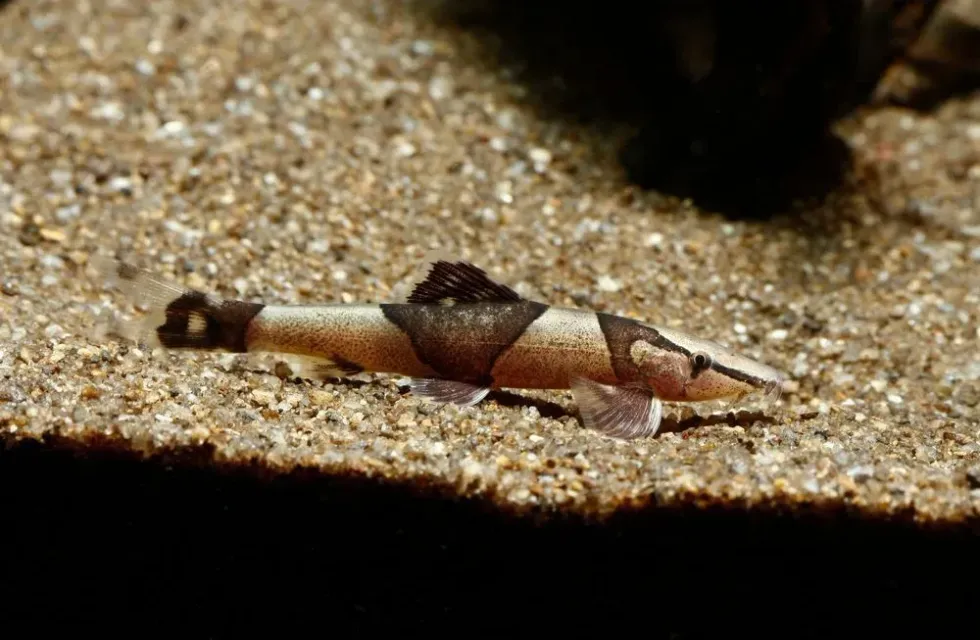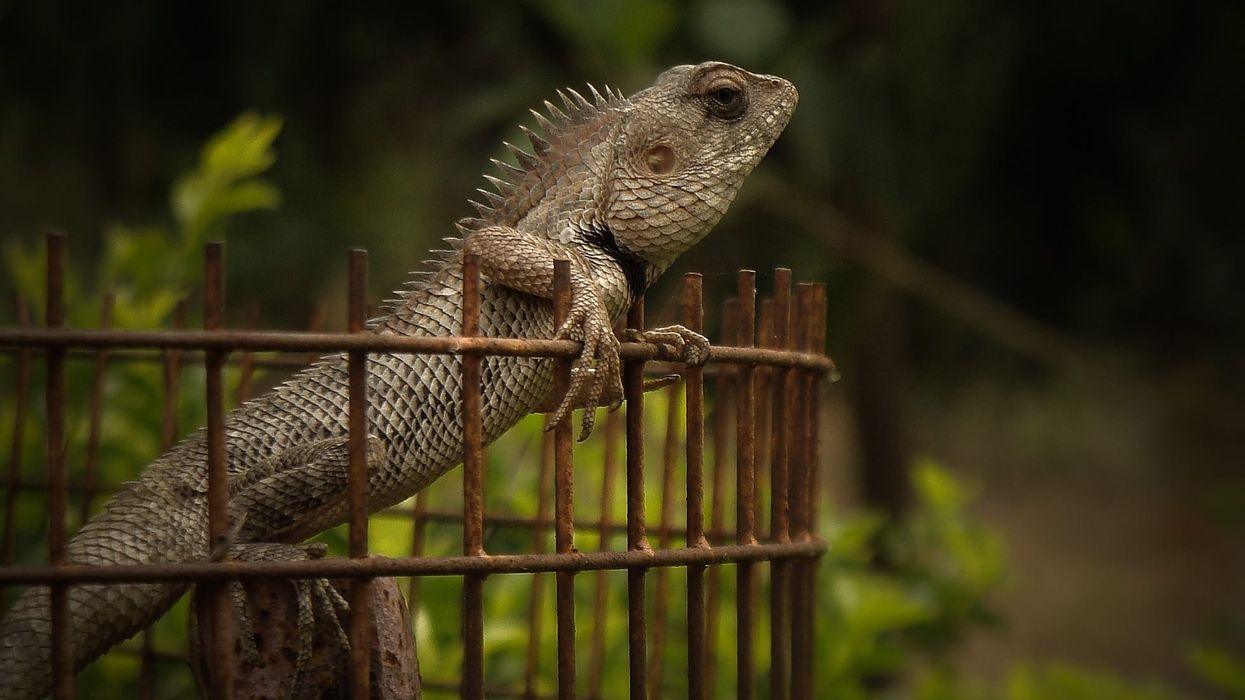Are you fascinated by loach fish, like the kuhli loach? Then here we have all the information on the lizard loach.
The lizard loach, also known as the gecko loach, is a group of ray-finned fish that is pretty popular as a pet. These loaches are mainly found in southeast Asia.
More specifically, in places, like Borneo Island, Laos, Vietnam, Cambodia, Malaysia, and more. In these countries, they can be found in fast-flowing freshwater river systems with high oxygen levels. If you are thinking of keeping these peaceful fish in an aquarium at home, then keep the required water flow and oxygen level in mind.
Its diet in the wild consists of algae, biofilm, small invertebrates, and insect larvae. At home, you can include live and frozen food in their diet as well.
The required water temperature for these fish is 68-78 F (20-25.6 C), and keep some pebbles and rocks in the tank. Also, try to keep a small group of them together as these are social fish.
Read on to know more about the lizard loach and if you like this article, then also check out pond loach facts and butterfly hillstream loach facts.
Lizard Loach Interesting Facts
What type of animal is a lizard loach?
Lizard loach is a group of ray-finned fishes.
What class of animal does a lizard loach belong to?
The lizard loach or gecko loach belongs to the family Balitoridae and class Actinopterygii of animals.
How many lizard loaches are there in the world?
There are many species of lizard loaches in the world, like the Homaloptera orthogoniata and the Homaloptera parclitella. The population for most of these peaceful species is unknown for many reasons. Such as, almost all of them are kept in an aquarium in houses as pets. That's why keeping track of their population also becomes hard.
Where does a lizard loach live?
The geographic distribution of the lizard loach is pretty widespread, but most species can be found around Southeast Asia. The species Homaloptera parclitella can be found in Peninsular Malaysia. Homaloptera confuzona occurs in Thailand, Cambodia, and Laos.
Homaloptera bilineata lives in Thailand, Myanmar, and maybe Nepal. Homalopteroides tweediei are seen in Indonesian Borneo, Cambodia, Thailand, Vietnam, Laos, and Malaysia. Homaloptera orthogoniata are endemic to Borneo Island.
What is a lizard loach's habitat?
The primary habitat of these marine creatures is freshwater river systems. Many of them prefer freshwater streams with fast current, coastal rocks, riffle zones, and some can be found around large-leaved vegetation or leaf litter among submerged trees, roots of riparian vegetation, boulders, or wood debris.
They have been seen to prefer shallow waters. These fish also live in an aquarium in households.
Who do lizard loaches live with?
Schools or a group of these peaceful fish can be seen living together. They also have the ability to stay with other species of fish.
How long does a lizard loach live?
These species of fish, including the Homaloptera orthogoniata, are known to live for about 8-10 years. However, if you properly take care of them and they live a disease-free life, then they can live for much longer.
How do they reproduce?
As these peaceful fish are not bred in captivity, nothing is known about their process of reproduction. We can at least assume their reproductive behavior from the other species of loach fish.
Most loach fish are not bred in captivity, but if you want to breed them, keep a large group of them in the tank. They tend to live in schools in nature, so it would drive them to spawn if many of them are in one tank.
The female will get bigger once she's pregnant.
You will need plants in the tank where the female can lay eggs. Once the female lays the eggs, transfer the adults from that tank to another.
The adults have a habit of eating the eggs, so transferring them to another tank would be extremely necessary. Give them brine shrimp, crushed flakes, or fry food and no frozen food till they are old enough.
What is their conservation status?
There are many species of lizard loach fish, and they have different conservation statuses. Like, the conservation status of the Homaloptera orthogoniata, Homalopteroides tweediei, and Homaloptera parclitella according to the International Union for Conservation of Nature are listed as Least Concern, while Homaloptera bilineata and Homaloptera confuzona are listed as Data Deficient.
Lizard Loach Fun Facts
What do lizard loaches look like?
These lizard loaches are small to medium-sized fish, and all the species can be differentiated by very few characteristics. That's why the species can be confused many times.
They all have long, slender bodies with a dorsal fin, a pectoral fin, a pelvic fin, an anal fin, and a caudal fin. They have yellow to reddish-brown body color with different patterns of dark patches.
The Homaloptera parclitella has two saddle-shaped blotches on its dorsal surface, while Homaloptera orthogoniata has three large saddle-shaped blotches on its dorsal surface. The Homaloptera confuzona mostly has four incomplete irregular-shaped dark bars on their dorsal side, which sometimes may be absent.
The Homaloptera bilineata has two dark markings that extend from their snout and end on their dorsal fin forming two stripes.
The Homalopteroides tweediei has a long brown stripe starting from their snout running through the lateral line and ending at the caudal base. They also have four dark crossbars that can be noticed down the sides and over the back.

How cute are they?
Many people consider these fish cute, as they have been seen as a pretty popular choice for pets. They are also rather peaceful fish in nature, which surely adds to their cuteness.
How do they communicate?
These fish communicate visually, by sound, and by vibrations in the water. The lateral line on these fish helps them figure out the water pressure and the motions and vibrations of the water surrounding them. This helps them figure out the location of their prey and predators.
How big is a lizard loach?
The size range of the lizard loaches does not vary a lot. Adult lizard loaches have been seen to be about 1.4-3.9 in (3.5-10 cm) in length. They can be around 2-3 times smaller than angelfish, which are about 6-8 in (15.2-20.3 cm) in size.
How fast can a lizard loach swim?
The exact speed at which lizard loaches swim is not known. However, they have been seen to swim at a moderate pace. They also use their advanced pectoral fins to get attached to the rocky substrate in the aquarium and search for prey.
How much does a lizard loach weigh?
The exact weight of these fish is not known. However, they are small to medium-sized fish, so we can assume that they weigh very little.
What are the male and female names of the species?
Males and females of the species have no specific names.
What would you call a baby lizard loach?
Lizard loach babies are known as fry.
What do they eat?
These fish are omnivorous in nature. Their diet includes aquatic insect larvae and other small crustaceans, like shrimps and other small invertebrates.
If you are keeping them in an aquarium, then give them a diet of frozen or live food. Also, keep a rocky substrate in the aquarium where algae or other surface growth can occur for them to feed on. Their diet also contains biofilm.
Are they dangerous?
No, they are not dangerous at all. They are also not aggressive, rather peaceful in nature. They live with many other species of fish very well. They don't harm the other fish in the aquarium either.
Would they make a good pet?
These peaceful fish make excellent pets. However, it would help if you remembered a few things when you're keeping them in the aquarium.
Keep a group of them together. For a group of six or more fish, the tank size should be at least 55 gal (208.2 l).
The temperature of the water should be around 68-78 F (20-25.6 C). Keep pebbles and rocks of many sizes and make the base substrate with sand and gravel. These fish live in fast-flowing streams with high oxygen levels in the wild.
You will need to maintain that oxygen level and water flow in the aquarium, so get powerheads and airstones. Powerheads help with the water flow, and airstones help increase the oxygen level in the water.
Frequent partial water changes will be necessary to keep the water quality at its best. Other than live and frozen food, they feed also on algae and biofilm, so don't introduce these fish to a biologically immature set-up where algae or biofilm cannot grow.
Did you know...
Lizard loaches require a water ph 6.0-7.5, and the water hardness should be in the range of 18-268.
What are loaches good for?
Other than small invertebrates, loaches feed on algae and biofilm, so they will keep your aquarium clean of algae by feeding on it. They are also not that aggressive, so they live peacefully with other species of fish.
Lizard loach compatibility
Lizard loaches are very peaceful, but they require a special environment to survive, which limits the number of fish species they can live with. Some fish they can live with are gobies, Devario, Discherodontus, catfish, seluang fish, barilius, and other species of loaches.
However, keep the size of the aquarium and the other fish in mind when you're keeping other fish with them.
Like, the biggest species of loach is the royal clown loach, which can grow up to about 30 in (76.2 cm) in length. Hence, choose a bigger aquarium if you are keeping a bigger fish or a bigger group of fish.
Here at Kidadl, we have carefully created lots of interesting family-friendly animal facts for everyone to discover! For more relatable content, check out these marine angelfish facts and tang fish facts pages.
You can even occupy yourself at home by coloring in one of our free printable fishes and loaves coloring pages.
Second image by S. Kulabtong.









